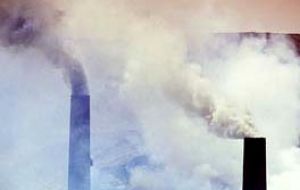MercoPress. South Atlantic News Agency
US tightens smog forming ozone pollution controls

The United States Environmental Protection Agency announced this week it was tightening the amount of smog-forming ozone that will be allowed, declaring that the air in hundreds of U.S. counties is too dirty to breathe. But the new lower level, 75 parts per billion (from 80 parts per billion), still is significantly higher than what the agency's scientific advisers had urged.
Administrator Stephen Johnson said he would push US Congress to rewrite the nearly 37-year-old Clean Air Act to allow regulators to consider the cost and feasibility of controlling pollution when making decisions about air quality, something that is currently prohibited by the law. In 2001, the Supreme Court ruled that the government needed to base the ozone standard strictly on protecting public health, with no regard to cost. Johnson said he did "what was required by the law and the recent scientific evidence," but his decision to set a higher limit than what the EPA's advisory committees had recommended sparked an immediate backlash from opposition lawmakers, public health advocates and even his own independent advisers. Nearly a year ago, EPA's Clean Air Scientific Advisory Committee reiterated in writing that its members were "unanimous in recommending" that the agency set the standard no higher than 70 parts per billion and to consider a limit as low as 60. EPA's Children's Health Protection Advisory Committee and public health advocates lobbied for the 60 limit because children are more vulnerable to air pollution. EPA and other scientists have shown that ozone smog directly affects rates of heart and respiratory disease and resulting premature deaths. The agency calculates that the new standard of up to 75 parts per billion would prevent 1,300 to 3,500 premature deaths a year, whereas a standard of 65 would avoid between 3,000 and 9,200 deaths annually.




Top Comments
Disclaimer & comment rulesCommenting for this story is now closed.
If you have a Facebook account, become a fan and comment on our Facebook Page!